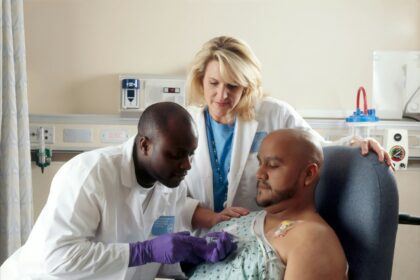Scientists are learning more about the differences between men’s and women’s health demands. The truth is that the sex you were assigned at birth affects your risk of developing certain health issues. The biological and anatomical status assigned to a person at birth is known as their “sex assigned at birth.” Their morphology and other traits serve as the foundation for it.
The following are some of the most prevalent health issues affecting women, along with risk management strategies:
- Heart Diseases
For women, heart disease is the leading cause of death.
Heart attack symptoms include:
a. Chest pain
b. Breathlessness
c. Arms Weakness
d. They might also feel sick to their stomach or vomit as a heart attack symptom. Furthermore, even while menopause does not cause heart disease, certain risk factors—such as reduced oestrogen and higher blood pressure and cholesterol—become more prevalent after menopause.
- Stroke
Stroke kills more women than males. Hemorrhagic strokes, or bleeding in the brain, and ischemic strokes, or blood vessel blockages that result in reduced blood flow, are the two forms of strokes. Speech difficulties and numbness in the arms and legs are common signs of a stroke, though they might differ according on the underlying reason.
There is also a connection between stroke and pregnancy. High blood pressure during pregnancy is a defining feature of preeclampsia, a condition that can raise your risk of stroke. Pregnancy can also bring on neurological events that increase the risk of blood clot diseases due to hypercoagulation, or excessive blood clotting. Your brain’s blood supply may therefore be restricted by these blood clots.
- Diabetes
Diabetes does raise the risk of heart disease in women by four times, though it is by no means exclusive to them. Diabetes-related problems, including depression, renal disease, and blindness, are also more common in women. During pregnancy, you may develop gestational diabetes, a condition in which your blood glucose level rises and additional issues arise. Treatment options for this condition, which affects at least three out of every 100 women, may include an appropriate diet, regular exercise, blood glucose monitoring, insulin injections, and oral medicine.
Diabetes can also lead to pregnancy complications, such as birth abnormalities and miscarriages. Pregnant diabetics may require extra testing and monitoring, especially if they are insulin dependant. Try to keep your weight within a healthy range, get exercise, and give up smoking to reduce your risk of Type 2 diabetes.
- Health concerns for mothers
The health of an individual might be affected by changes they go through during pregnancy, ranging from high blood pressure to iron-deficiency anaemia.
“Whether or not you have medical conditions, preconception care is important,” says Jessica W. Kiley, MD, a Northwestern Memorial Hospital obstetrician and gynaecologist. “Those who have diabetes or high blood pressure, for instance, ought to have these conditions under optimal control at the time of conception.” Patients with high-risk conditions, such as serious cardiac diseases and neurological disorders, should talk to their doctor about their treatment plan. Furthermore, you shouldn’t get pregnant right away following weight loss surgery.
- Urinary tract infections (UTIs)
Urinary tract infections (UTIs) are caused by bacteria that enter the urethra and begin to grow. Because women have a shorter urethra than males, they are more likely to get UTIs than men. This shortens the distance that germs must travel to enter the bladder. Frequent urination, pain or burning during urination, and murky urine are signs of a urinary tract infection (UTI). A UTI may clear up on its own, but if medication is required, a doctor can prescribe antibiotics. Other tests can determine whether the urinary system is normal if UTIs start to recur. - HPV
The number of sexually transmitted infections (STIs) is over thirty. The human papillomavirus (HPV), one of the most prevalent, can be avoided with the HPV vaccine.
Approximately 80% of men and women who engage in sexual activity will get HPV at some point in their life.
One of the leading causes of death for women used to be cervical cancer. Clinicians can identify precancerous cells and treat them to eradicate them by using the Pap test or HPV screening, which significantly lowers the incidence of cervical cancer. A loop electrosurgical excision method (LEEP) can remove precancerous cells from the cervix if significant precancer is found.
- Breast cancer
Breast cancer is the most frequent cancer among women in the United States, second only to skin cancer. It is a fact that the lifetime risk of breast cancer for women in the United States is 13%.
You can notify your primary care physician of any changes you notice in your breasts by being aware of them. This is on top of having your yearly mammography, which you should begin at age 40. Your doctor may advise an early test if you have the BRCA1 or BRCA2 genes, which raise your risk of breast cancer. By adopting healthy lifestyle habits like exercising and giving up smoking, you can reduce your risk.
- Osteoporosis
Your bones get weaker due to the disease osteoporosis, which increases the risk of fractures. Osteoporosis-related fractures are more common in postmenopausal women. Certain drugs, early menopause, a low body mass index (BMI), cancer treatment, and heredity are examples of additional risk factors. By increasing your calcium intake, exercising with weights in moderation, abstaining from smoking and excessive alcohol consumption, and maintaining an active lifestyle, you can reduce these risks. - Alzheimer’s disease
A type of brain degeneration known as Alzheimer’s disease occurs when aberrant particles known as neurofibrillary tangles and plaques accumulate in the brain and kill off healthy brain cells. Over two-thirds of the 6 million Americans who have Alzheimer’s disease are female. Although it has long been assumed that this is due to women living longer, researchers are now looking at the possibility that genetic variants may also be involved. Maintaining an active lifestyle and adhering to a nutritious diet are two healthy lifestyle choices that can support optimal brain function.











